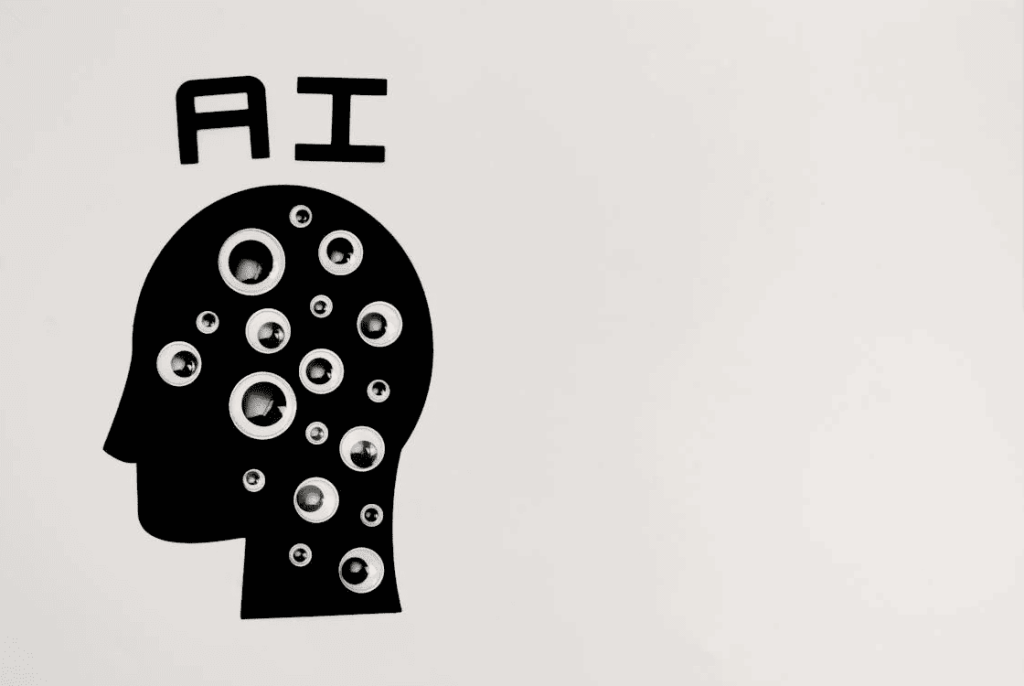Are you finding it hard to get better grades for your synthesis essay? Then you’ll find the synthesis essay examples and strategies in this article very helpful. You’ll see that it’s possible to learn the best way to write by way of example.
Throughout this article, we’ll use a number of examples to illustrate our points. This is especially handy for those of you who love to learn through examples. We’ll include the best practices on how to write a synthesis essay and how to start one with the right structure.
Keep reading to learn more about how to write better sentences for your synthesis essays.
What Is a Synthesis Essay?
A synthesis essay is a type of writing that combines information from multiple sources to present a cohesive argument or analysis on a particular topic. The writer evaluates different perspectives, connects ideas, and constructs a well-rounded viewpoint.
This type of essay requires critical thinking. That’s because it’s not just about summarizing sources but integrating them to support a central thesis or argument.
Example: In an essay about renewable energy, the writer might synthesize data from scientific studies, government policies, and economic analyses. Here you can argue that investing in renewable energy is both environmentally necessary and economically viable.
Oct 1, 2024 • 12 min read
Top Features of a Synthesis Essay
Now that we’ve covered what is a synthesis essay, let’s consider the top features of this type of essay to better understand what’s involved in the writing process. Therefore, you can figure out how to write a successful synthesis essay on your first try.
Here are the synthesis essay’s top features:
- Synthesis of multiple sources: A synthesis essay requires combining ideas from multiple sources to develop a cohesive argument or perspective. It’s not just summarizing each source. Instead, the writer must integrate and interweave information by showing relationships, similarities, or contradictions to create a unified understanding of the topic.
- Clear thesis statement: As always with any essay, there must be a clear and concise thesis that reflects the writer’s stance or the main idea developed from the synthesis of sources. This thesis guides the entire essay. It also ensures that all synthesized material directly supports the central argument or purpose.
- Balanced presentation of sources: A well-crafted synthesis essay fairly represents all sources and avoid bias. It involves presenting different perspectives accurately, even if the writer disagrees with them, ensuring the argument is well-rounded and considers multiple viewpoints before drawing conclusions.
- Critical analysis and interpretation: Beyond merely combining information, the writer must critically analyze and interpret the sources. This involves evaluating the credibility of the sources, identifying underlying assumptions, and making connections to the broader context.
- Proper citation and attribution: A synthesis essay must properly cite all sources used, and follow the required citation style. Furthermore, accurate attribution prevents plagiarism and lends credibility to the essay. It also allows readers to trace the sources and evaluate the evidence supporting the argument.
How To Start a Synthesis Essay: Examples and Structure
Now let’s look at the process of how to start a synthesis essay with examples and structure. This section aims to give you a comprehensive understanding of what to include in your essay. You’ll see that there’s a recipe for writing a good synthesis essay and we’ll show you how in the following section.
Hooking the Reader
Starting with a strong hook is crucial to grabbing the reader’s attention. The hook can be a provocative question, a coherent argument, a surprising fact, a quote, or an anecdote that introduces the topic.
For example, if your essay is about the impact of social media on mental health, you might start with: “Can scrolling through Instagram be more harmful than helpful? Recent studies suggest a troubling link between social media and rising anxiety levels.”
This sets the stage for your argument and engages the reader from the outset.
Providing Background Information
After the hook, offer some background information to help the reader understand the context of your essay. This section should introduce the topic and its relevance. Furthermore, you can give a brief overview of the main issues or debates surrounding it.
For example, in an essay about renewable energy, you might write: “As the world grapples with climate change, renewable energy sources like wind and solar have become central to the discussion on reducing carbon emissions.”
Here you’ll be providing a foundation for the reader and preparing them for the ideas that will follow.
Presenting the Thesis Statement
Your thesis statement is the central argument or claim that your synthesis essay will support. It should be concise and reflect the relationships between the sources you’ll be discussing.
For example, in an essay about renewable energy, your thesis might be: “Renewable energy, despite initial costs, is the most viable solution for reducing global carbon emissions and ensuring long-term environmental sustainability.”
This statement provides a clear direction for your essay and indicates how you will combine the sources to support this argument.
Previewing the Main Points
To help guide the reader, briefly preview the main points or themes that will be explored in the body of the essay. This section outlines how the essay will be structured and what the reader can expect from the body paragraphs.
For example: “This essay will examine the economic feasibility of renewable energy, its environmental impact, and the social implications of transitioning to a greener economy.” The roadmap prepares the reader for the discussion ahead and ensures clarity in how the essay will unfold.
How To Write a Synthesis Essay: 6 Top Examples and Best Practices
Now let’s focus on the process of how to write a synthesis essay with examples and best practices. This allows you to write synthesis essays that get the top marks at your educational establishment. Some of these best practices you can also apply to other content, such as argumentative essay writing.
1. Use AI Tools
Writing a synthesis essay with AI tools involves using artificial intelligence to streamline research, generate ideas, and organize your essay. Start by using AI to gather relevant sources and summarize key points. You’ll find that AI tools can help identify common themes, generate thesis statements, and suggest essay structures.
However, it’s important to choose a tool that offers the features and accuracy that you need to craft a winning essay. For example, you can use the AI Essay Writer for everything from a synthesis essay outline to the complete work.
2. Thoroughly Understand Your Sources
Before writing, ensure you fully understand the sources you’ll be synthesizing. Therefore, analyze each one for key points, themes, and arguments. Also, look for connections between sources, such as agreements, contradictions, or complementary ideas.
For example, if you’re focusing on synthesis essay topics about climate change, one source might emphasize economic impacts, while another focuses on environmental effects. Understanding these angles allows you to weave them together effectively in your essay and show how they contribute to a broader argument.
3. Organize Your Essay Logically
A well-organized synthesis essay has a clear structure, typically with an introduction, body paragraphs organized by theme or argument, and a conclusion. Each body paragraph should start with a topic sentence that relates to your thesis and incorporates multiple sources.
For example, if a paragraph is about the economic benefits of renewable energy, then integrate data from several studies to support this point. Logical organization ensures that your essay flows coherently and makes your synthesis clear to the reader.
4. Integrate Sources Effectively
Effective synthesis requires smoothly integrating multiple sources into your argument. Instead of summarizing each source separately, combine them to show how they interact. Moreover, you can use transitions to connect ideas and highlight relationships between sources.
For example, “While Smith argues that renewable energy is costly, Jones counters that long-term savings outweigh initial expenses.” With this approach, you’ll demonstrate your ability to engage with different perspectives and build a nuanced argument.
5. Critically Analyze and Connect Ideas
Beyond just presenting information, a synthesis essay requires critical analysis. Evaluate the strengths and weaknesses of each source and explain how they relate to your thesis.
For example, if one source provides compelling data but lacks context, point this out and supplement it with another source that fills in the gaps. This practice shows your critical thinking skills and deepens the reader’s understanding of the topic, making your argument more persuasive and well-rounded.
6. Revise and Edit Thoroughly
After drafting your synthesis essay, take time to revise and edit thoroughly. Try to look for clarity, coherence, and consistency in your arguments. Additionally, ensure that each paragraph flows logically and supports your thesis. Finally, check for grammar, punctuation, and citation errors.
For example, during the revision stage, you might realize that two paragraphs on economic benefits can be combined for a stronger argument. Careful editing ensures that your essay is polished and presents a well-structured argument.
Synthesis Essay Example for Advertising Prompts
When using AI tools for your essay writing, you’ll need to write prompts to generate text. In this section, we’ll share a synthesis essay example for advertising prompts to get you going. Here are prompts you can write for different advertising topics:
- Impact of advertising on children and adolescents: “How does advertising affect children and adolescents? Evaluate the psychological and behavioral impact of targeted ads on younger audiences, considering the role of digital and traditional media. Incorporate studies and examples of advertising aimed at young consumers.”
- The evolution of advertising in the digital age: “How has the digital age transformed advertising strategies? Analyze the shift from traditional to digital advertising, focusing on the use of data, personalized ads, and social media influencers. Discuss the benefits and challenges of these new strategies.”
- The role of advertising in shaping societal norms: “How does advertising influence societal norms and values? Analyze how advertising campaigns reflect or shape public attitudes toward gender roles, beauty standards, or consumer behavior. Use examples from various ad campaigns to support your analysis.”
AP Lang Synthesis Essay Examples
Now let’s turn our attention to AP lang synthesis essay examples to give you some ideas on how to start. Don’t copy these ideas outright, but use them for inspiration in your academic writing to come up with a topic of your own.
The Impact of Technology on Education
This essay discusses how technology has reshaped education by emphasizing both its positive and negative effects. You can synthesize sources to argue that while technology has made education more accessible and interactive, it also poses challenges such as distractions and a widening digital divide.
Overall, the essay balances the benefits of technological tools, like online learning platforms, with the drawbacks. These include over-reliance on devices and the potential for reduced critical thinking skills.
Finally, you can conclude that while technology should be embraced in education, it requires careful integration to avoid undermining the quality of learning.
The Role of Social Media in Modern Activism
In this essay, you can examine how social media has transformed modern activism, by using various sources to support the argument. The essay highlights how platforms like Twitter and Facebook have made it easier to mobilize support, raise awareness, and coordinate actions globally.
However, you can also discuss the downsides, such as the spread of misinformation and the potential for online activism to replace more substantive forms of engagement. Then, you can conclude that while social media is a powerful tool for activism, it should integrate with traditional methods of civic engagement for lasting impact.
The Debate Over Genetically Modified Foods
This essay tackles the controversy surrounding genetically modified foods by presenting arguments from both proponents and critics. You can combine sources to argue that GM foods can increase food production and offer nutritional benefits. However, they also raise concerns about environmental impact, ethical considerations, and long-term health effects.
In addition, the essay can acknowledge the potential of GM technology to address global hunger and stress the need for rigorous testing, transparent labeling, and ongoing research.
Finally, in the conclusion you can advocate for a cautious but open-minded approach to GM foods. This ensures balancing innovation with public health and environmental stewardship.
The Influence of Pop Culture on Society
This essay examines the pervasive influence of pop culture on societal values, behaviors, and norms. Try to combine the sources to argue that pop culture serves as both a mirror and a shaper of society, thereby reflecting current trends while also influencing public perceptions and behaviors.
Furthermore, you can discuss the role of media, celebrities, and entertainment in setting societal standards. You can focus on body image, consumerism, and social issues. Tackling these topics is interesting because these are important current ideas that are discussed in mainstream media.
The Role of Government in Public Health
With this essay, you can explore the extent to which government should be involved in public health issues. Start by arguing that government intervention is essential for addressing widespread health crises. Top examples include pandemics and obesity.
Furthermore, you can cover the benefits of public health campaigns, regulations on harmful products, and vaccination mandates. However, don’t forget to offer a few negatives for a balanced approach, such as governmental overreach and reduced personal autonomy.
Write Your Synthesis Essay With Smodin AI
The synthesis essay examples in this article will give you a lot to think about regarding how to begin writing your own content. They give you an idea of what type of essay you need to write and what kind of ideas you should present.
Try to pick a synthesis essay example and use it for inspiration to come up with a topic that’s unique to your assignment. This ensures that you can complete the work within the guidelines set by your teachers or professors.
Do you need further help completing your synthesis essay? Then use Smodin AI to get the help you need to get a good grade. Our innovative tool offers a beginner-friendly user interface and plenty of features to complete any essay.
So what are you waiting for? Give Smodin AI a test today to improve your synthesis essay grades.
FAQs
What are the common mistakes in writing a synthesis essay?
Common writing mistakes with synthesis essays include failing to develop a clear thesis and merely summarizing sources without thorough research and analysis. Furthermore, not integrating sources effectively and overlooking opposing viewpoints can also be a mistake.
Also, some students struggle with organizing their essays coherently, which results in disjointed arguments. Another frequent issue is neglecting to properly cite sources since it can lead to plagiarism.
How do you choose sources for a synthesis essay?
When selecting sources for a synthesis essay, it’s important to choose those that offer diverse perspectives and credible information relevant to your thesis. Hence, look for sources that either support your argument or present a counterargument you can address.
Additionally, avoid using sources that are too similar since they won’t provide the depth needed for synthesis. You can try prioritizing scholarly articles, credible websites, and reputable books.
What role does the thesis play in a synthesis essay?
The thesis is the central argument or claim of a synthesis essay. It guides the entire essay by presenting the main point that the synthesis of sources will support. Therefore, a strong thesis is specific, arguable, and reflects a nuanced understanding of the topic.
Furthermore, it should clearly indicate the relationship between the sources being synthesized and set the stage for the analysis that follows.
How do you integrate sources in a synthesis essay?
To integrate sources effectively in your synthesis essay, use them to support or challenge your thesis. You can weave quotations and summaries smoothly into your argument. Also, make sure each source is introduced with context and followed by an analysis that ties it back to your main point.
Avoid adding quotes without explanation. Instead, explain how each source contributes to your overall argument by showing connections between sources to build a cohesive discussion.











 AI
Plagiarism Checker
AI
Plagiarism Checker
 AI
Content Detection Remover
AI
Content Detection Remover
